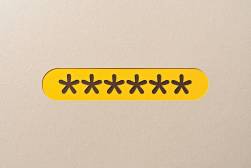One critical part of digital services isn’t digital at all

Over the past decade, 46 of the 55 states and territories have put at least one executive order on the books related to digital transformation. But a big part of those efforts isn’t digital at all.
Many states and cities have installed digital services teams to make it easier to complete tasks like applying for an event permit or paying a bill, but the trend isn’t to make government service delivery entirely digital. Experts told StateScoop that digital services are more about improving how citizens interact with the government and that technology is just one means to do that.
Kirsten Wyatt, senior director of the Digital Service Network at the Beeck Center for Social Impact and Innovation at Georgetown University, said the term “digital services” is a bit of a misnomer for what the work entails.
“Digital services, when done right, is about centering the user or the people using the service,” she said. “And so fundamentally, digital services is not a technology solution — it really is using those core principles of human-centered design to look holistically at the ways government provides services.”
That holistic approach is elevating traditional in-person services, too. Officials told StateScoop they’re trying to find the right balance between digital and in-person service delivery. In some cities, agencies are finding that some residents prefer to visit City Hall for services, evidence that government should be flexible in its approach.
Need vs. preference
During COVID-19 pandemic, technology was in some cases the only way to receive certain government services. But Shelby Switzer, Baltimore’s digital services director, told StateScoop that even a few years after the most stringent restrictions on in-person activities have lifted, digital services are falling short of being the default option.
“You still have to have in-person services available for folks, even if there is a big push to digitize and have people default to digital,” Switzer said. “There’s also a lot of folks who don’t want to use digital, or who can’t easily. So the digital divide is very real, especially here in Baltimore.”
The digital divide is fueling the need for in-person services as billions in federal broadband funds chip away at the problem. But there’s a segment of the population that prefers to interact with their government in-person, with traditional customer service. South Bend, Indiana, Chief Information Officer Denise Riedl said that distinction became apparent when she was standing up her city’s new digital services team this year.
“We’re trying to unpack with residents like, OK, how much of this is a need and how much of this is a habit?” she said. “Do you go through, for instance, the drive-thru where people can pay their water bill in cash because they have to? Is that because they’re used to it? If they knew how or they were able to pay their bill online, would they prefer that?”
To get answers to questions about want versus need, South Bend took inventory of its services and collected data on which residents prefer to receive in-person versus digital. The results of user testing, Riedl said, showed that residents want both options.
“We’re going to be spending the next year-and-a-half doing a ton of work on this front at the intersection of digital services and customer service,” she said. “And so we’re doing a lot of planning right now, we’re doing a lot of prototyping and it’s all going to culminate in a lot of different projects coming to a head.”
Wyatt, at the Beeck Center, said such a research process is crucial for digital services teams to determine the needs of their communities and how to balance in-person services with digital ones.
“It’s very rare that you’re gonna have 100% of one approach versus another. It could be 50/50, it could be 75/25 just based on what you learn,” Wyatt said. “But I think that’s where digital service directors are going to look at that research first and then develop processes out from there. It’s really looking at your own service and your own constituency and figuring out what works for them.”
Switzer said this type of testing is important in Baltimore, too, and that focusing on in-person customer service is a big part of what it means to do better service delivery across the board. Most recently, the Baltimore Digital Services team helped the city research how to make improvements to its special event permitting process. Switzer said the results of gathering customer experience feedback through user research pointed to the desire for more human interaction — not less.
“Through this research that we did, we definitely heard from folks that even if there was a digital option, they still want to come in,” Switzer said. “Part of that is because they have good relationships with the government staff that they do permitting with. So they want to come say hi, and they want to get their questions answered immediately, instead of having to wait for an email. And they just like the people that they work with.”
‘In physical space’
The hybrid approach is driving a new project in South Bend. Riedl said that over the next few years the city will move its offices into a new City Hall, which will house a “one-stop shop” where residents can access services digitally or with the help of a person.
She said the new “human-centered” space will be a blend of digital and offline user-friendly services that break down potential divisions between residents and government. In the space, she said, digital services team members will help residents navigate online processes and customer service professionals will help residents who prefer in-person services.
“I love how even just the concept of the ‘one-stop shop’ nods to that dramatically in the sense that we’re actually building a space in this building that is more resident-centric,” Riedl said. “We are rethinking it in the way a lot of cities rethink the way we build digital products and our web presence.”
After Baltimore revamps its special events permitting process, adding a digital option to the city’s 311 system is next in line. Typically, 311 is a phone service, where representatives in call centers field questions. Switzer said the new 311 solution will be “a good blend of in-person and phone calls, as well as digital.”
“Cities are physical places, so there will always be some physical and in-person aspect to the work because, like the city, we’re all living in unity with each other physically,” Switzer said. “We can have a digital utopia idea, we can definitely use digital tools and things, but at the end of the day, we’re in physical space with each other and it’s just always going to be important to have those in-person options and have hybrid approaches to how we do service delivery.”

This story was featured in StateScoop Special Report: Digital Services — A StateScoop Special Report






